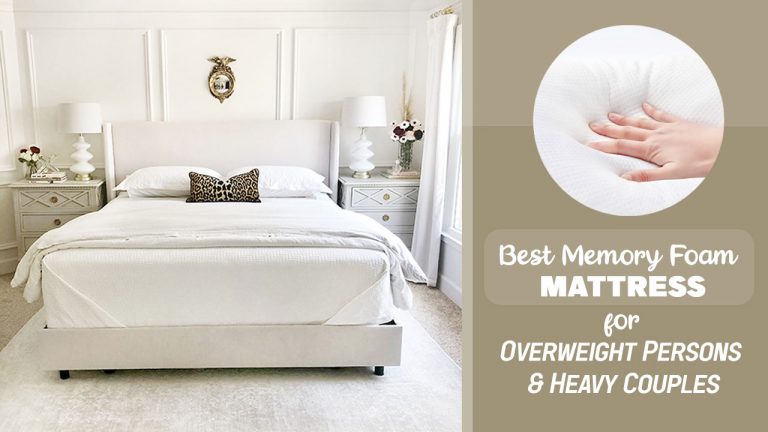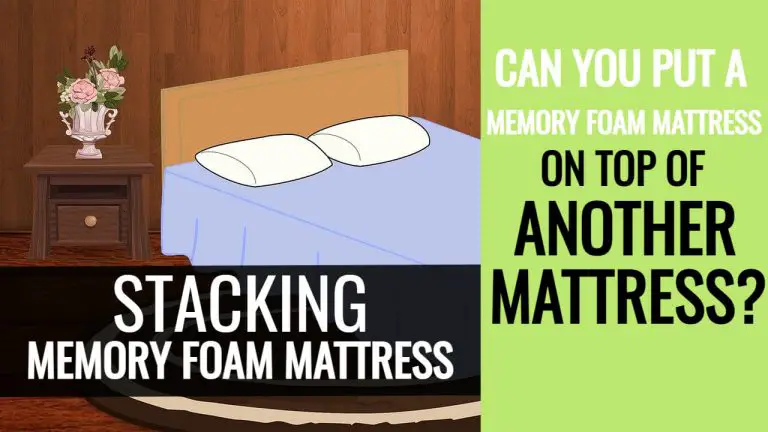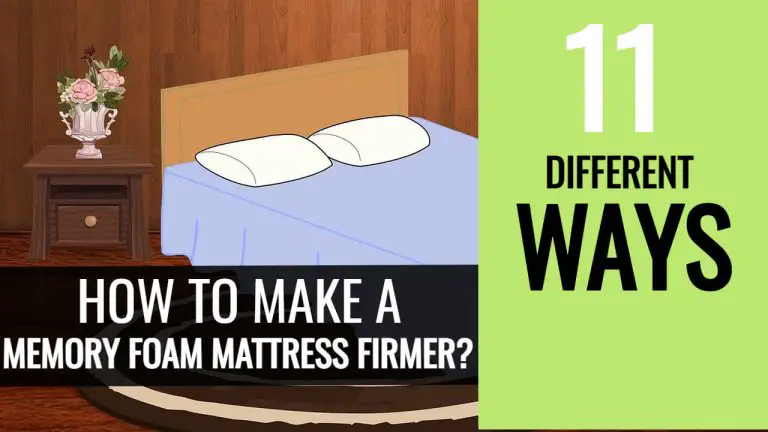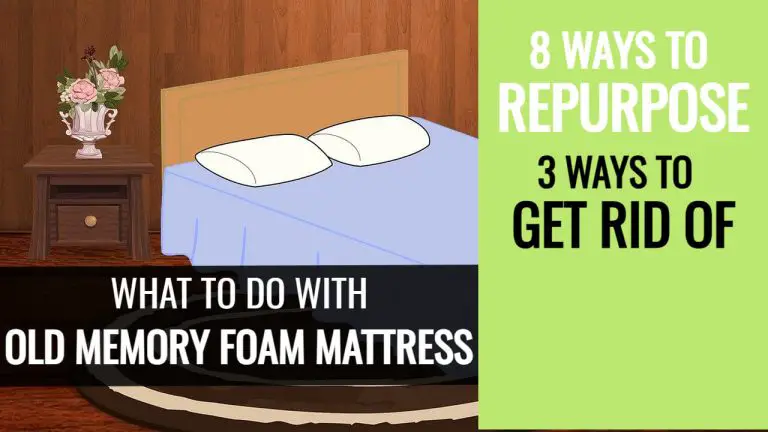Will A Heating Pad Hurt a Memory Foam Mattress? [Memory Foam Mattress Frozen]
Memory foam mattresses are preferred by many for their extraordinary performance in improving quality sleep and relief from back pain. The material is made from viscoelastic substance and soft.
It is highly responsive to both pressure and heat and, therefore, naturally lines the body along the curves. These properties make memory foam mattresses very comfortable and cushioning.
As discussed, memory foam beddings can retain body heat. Its viscosity increases with temperature. The warmer the environment, or more the time you are lying on the bed, the more flexible the foam becomes and vice versa.
People are confused about this behavior of memory foam mattresses. Thus one should have a better understanding of the material to know how it will affect the performance.
Does temperature affect memory foam mattresses?
Memory foam is a temperature-sensitive polyurethane material that has the property to absorb and hold moisture.
It responds to its environment, unlike the other material mattresses. Memory foam mattresses have a differentiating trait of temperature-sensitive that’s not found in any traditional or latex or coil mattresses.
They are elastic and soft when warm but become firm and hard when left in a freezing environment.
For instance, a prevalent scenario to check out the memory foam’s performance concerning temperature is room temperature.
The room temperature has a direct impact on memory foam mattresses. If the room’s temperature is high, then the bedding will perform differently as its physical structure will exhibit reduced viscosity.
Lower viscosity means the material will behave more fluidly (flexibly). The body heat also adds to the ambient room temperature.
On the contrary, at lower temperatures, memory foam becomes rigid and inflexible.
During fall, or if you reside in the colder region, you must have experienced that the memory foam mattress becomes stiff and rigid compared to the feeling it gives in summer.
The material will take longer to warm up and ultimately more time in contouring.
So it’s important to understand is that as surroundings (weather settings) changes, the consistency and performance of the material may change as well.
People should know the material’s response to temperature rather than complaining about its signs of failure or manufacturing flaws. This advice is primarily for first-time users of this material.
Do memory foam mattresses get hard when cold?
From the above, we had inferred that the feel of the memory foam mattresses changes when the temperature of your bedroom varies.
The memory foam mattress will feel harder and firmer if the room is cold. But remember, when you lie down to sleep on the material, it will absorb your body heat and soften.
While this may take a bit longer than in warmer conditions but the reaction is evident.
Because of this adaptive feature, you will be able to enjoy the support and comfortability of the foam mattress, along with the relief from body aches.
Does memory foam mattress get frozen?
We already know that how sensitive is memory foam in relation to its environment. Its heat retention feature sometimes proves inconvenient and make you sleep hot.
The manufacturer has started constructing memory foam mattresses with different cooling technologies such as gel beads, foam crystals and other air-filled cells to combat the heating problems.
But as soon as the mattress is open to lower room temperature (BELOW 20°C or 68°F), these gel beads or cooling cells get more complex close to freezing. It may feel hard as a rock once the temperature reaches 0°C (32F).
Also, as you know, polyurethane memory foam has a high capacity to absorb moisture, so the material may get frozen if they are wet or exposed to shallow temperatures.
Additionally, if the memory foam mattress is placed on non-ventilated areas (non-breathable foundations), condensation underneath may result in foam freezing when temperatures get lowered.
Does freezing damage memory foam?
A frozen mattress takes a longer time to adjust to body contours. It’s uncomfortable to sleep on as the surface turns hard.
However, it will become too easy after you lie on it sometimes, but the response time is quite a bit longer.
But if this repetition of freezing and thawing goes regularly, then it may damage the mattress in the long run.
How to heat up a memory foam mattress?
The overnight temperature in colder regions makes the memory foam mattress behaves in a more firm and stiff way.
Following are the ways to heat a memory foam mattress and make it sleep-friendly in cold weather.
- Buy a memory foam mattress that doesn’t have an infused layering of gel, copper, or graphite, as they can prevent heat retention.
- Sink into the memory foam bedding, as you can use your body’s natural warmth, increasing the warmth it naturally softens the surface and help retain heat on the coldest nights.
- Maintain the temperature of your room at around 60°-90°F. Turn up your thermostat 30 minutes before sleep. You can change the temperature settings or use heaters for some time.
- If you want the bed to get warm, add extra comforters or heavyweight sheets to your bed. You can use woolen or fleece blankets to cover the mattress or topper to insulate against the lowering temperature.
- Its recommended not to use heating pads and electric blankets over a memory foam mattress.
Will a heating pad ruin a memory foam mattress?
The short answer is Yes.
You must be tempted to use a heating pad or similar electronic devices to warm your memory foam mattress. The process may look like a quick way to insulate the bedding.
But remember these heat sources will damage the internal cell structure of the foam material, thereby interfering with the adaptive quality of the viscoelastic substance. It will ruin the mattress and also decrease its life span.
In a situation where you need to use heating pads, then do use them prudently. Set it at lower settings and not in direct contact with the mattress. Instead, use a thick blanket over which you can place the heating pad.
Also, set the timer so that it doesn’t run for a more extended period. Lastly, read the warranty or user manual before using such pads.
Most of the memory foam mattress comes with ten years or more warranty and devoid of such schemes.
Final Words
Though memory foam can be found to be more responsive in freezing temperatures, that doesn’t mean you have to suffer during nights as the mattress will fail to deliver on its unique feature of custom contouring.
The temperature-sensitive feature works in alliance with your body heat and provides the needed support and cushioning. Memory foam is affected by different temperatures, but there is no need to be worried as it’s completely normal.
Follow our tips and explanation to heat up and thawing the frozen memory foam mattress to enjoy the benefits of good night’s sleep.






